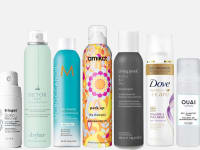Sorry, but you're probably washing your hair wrong
A hair stylist weighs in on how—and why—to ‘oil-train’ your hair
Products are chosen independently by our editors. Purchases made through our links may earn us a commission.
What if we told it was good to not wash your hair? It turns out that washing as infrequently as once a week (or even skipping shampoo entirely) helps restore moisture balance to your scalp and hair—not to mention, saves you time in the shower. If you feel like you must wash every day to avoid your hair becoming an oil slick, we’re talking to you in particular: You (yes, you) can train your tresses to produce less oil between washes. We spoke to a hair stylist to get the inside scoop on how to do it.
How do you know if you’re washing too often?
If you’ve noticed that your hair is constantly oily, this, ironically, could be an indication that you need to cut back on washes. When you use shampoo, you strip the hair of its natural oils that moisturize your scalp, condition your strands, and give hair its shine. If you’re shampooing every day, the sebaceous glands, which are responsible for oil production in the skin, compensate for the removal of oil by producing more. This can even lead to greasy dandruff—yellowish flakes or scales form on your scalp in response to overproduction of scalp oil. When you space out your washes and let your natural oils replenish, the sebaceous glands stop trying to replace the oil so quickly, and the vicious cycle is halted.
On the flip side, If you notice your scalp looks and feels dry, this can be a sign of over-washing. An itchy, tight-feeling scalp or dry dandruff (white—rather than yellow—flakes of parched skin) are both signs that the scalp needs more moisture than it’s getting, and over-washing could be the culprit. Washing too much may also show in the form of breakage, frizz or flyaways, and lack of shine.
How often should you wash your hair?
If you’re like many Americans, you’re sudsing your locks every time you shower, even if you shower once a day. While there’s no hard and fast rule, shampooing every day is too much. How often you should wash your hair depends on its density and texture, and your desired results. “Overall, two to three days [a week] is perfect,” Graziella Meola, a Boston-based hair stylist working at Salon Capri, says. “That way your hair isn’t getting too greasy.”
Many people with dense or textured hair, which Meola defines as thick, curly, or kinky, can go longer between washes, cutting down to one or two washes a week, and/or switching to a more conditioning shampoo that uses gentler, non-drying cleansers rather than the common sulfates found in many shampoos.
However, if you spot greasy dandruff on the scalp after you’ve settled into a routine of washing less often and you use styling products on your wet or dry hair post-shower, Meola says this is a sign of product build-up, which she notices more often on her thick-haired clients. “It’s almost the people with a lot of hair who don’t really get in there when they shampoo, so it keeps building up,” she says. In this case, Meola suggests switching to washing two to three times a week if you’re only washing once, and combing through the hair with a paddle brush to exfoliate the scalp before each wash. You may also shampoo twice to ensure you’re fully cleansing the hair—it’ll be at least a few days before it gets this treatment again.
How to wean yourself off overwashing
It can take a few weeks for the scalp to balance out and stop overproducing oil after you begin spacing out your washes. In that time, though, Meola suggests using a dry shampoo to minimize the appearance of greasy hair. A good dry shampoo soaks up oil and adds volume, so your hair feels and looks as close to freshly washed as possible.
If washing your hair is essential to your everyday routine, Meola suggests substituting with a conditioner-only rinse, which is exactly what it sounds like: Hop in the shower, rinse your scalp with water, and only apply conditioner to the ends. “That way you feel like you washed it, but you’re really just adding a little conditioner in there and then drying it or letting it air dry.” Unless you have very damaged, dry, or frizzy hair that needs intense moisture, Meola recommends using a lightweight conditioner that won’t build up or weigh down hair.
If it’s more the act of showering than shampooing that’s a part of your day, wear a shower cap to avoid getting hair wet and preserve your style. Bonus: You’ll get ready a lot faster without having to do your hair every morning.
Switch to a gentle shampoo that won’t dry out hair
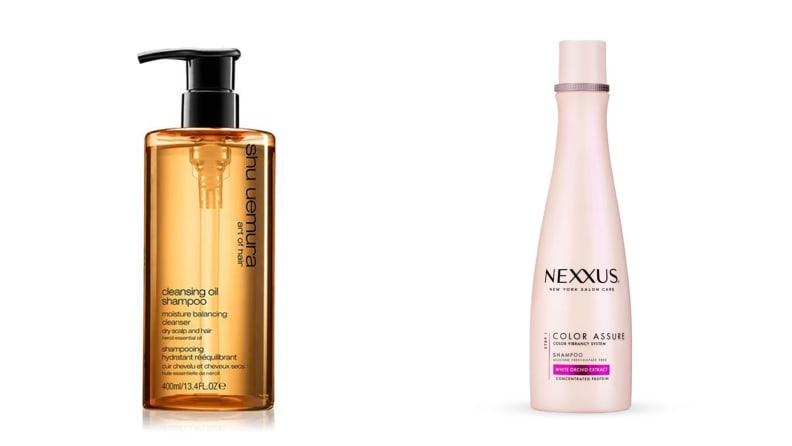
Use a gentle shampoo to cleanse your hair without stripping it of moisture.
Meola’s go-to suggestion is the Cleansing Oil Shampoo from Shu Uemura, which is “actually meant for oily roots and dry ends, so it’s a gentle cleanser,” says Meola. “It’s not going to dry out the ends, but it’s going to take out any extra oil on your base and on your roots.” Another great, gentle shampoo we like is Nexxus Color Assure Shampoo for Color Treated Hair, which preserved dyed hair the best during our tests and is silicone and sulfate-free. Plus, it’s available at drugstores.
Get the Cleansing Oil Shampoo on Shu Uemura for $57
Get the Nexxus Color Assure Shampoo for Color Treated Hair at ULTA for $13.99
Use a dry shampoo for between-wash touch-ups
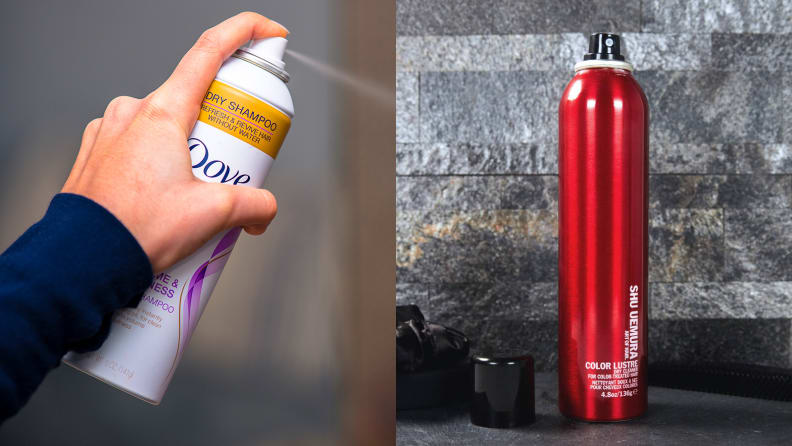
Dry shampoo freshens your hair by soaking up oil and adding volume.
Meola likes the Shu Uemura Lustre Dry Cleaner Dry Shampoo, which is great for darker hair because of its translucent micro-fine powder. “You’re not going to get that white, powdery feel,” she says. “It’s great for blondes, too, but I feel like it’s even better for brunettes because obviously you’ll be able to see [white powder] more with dark hair.” If you’d prefer a drugstore option, we like Dove Refresh + Care Dry Shampoo, which leaves the hair feeling almost as clean as freshly washed locks.
Get the Lustre Dry Cleaner Dry Shampoo on Shu Uemura for $39
Get the Dove Refresh + Care Dry Shampoo at Walmart for $4.88
Pick a light conditioner to smooth hair between shampoos
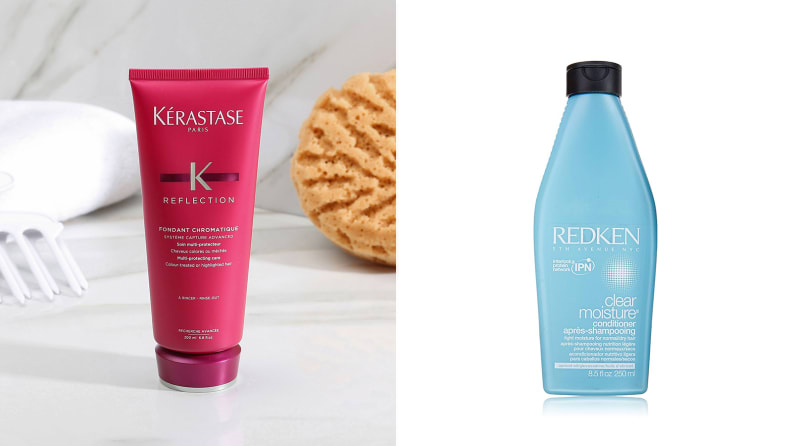
Use a lightweight conditioner only on the ends of your hair.
For “washing” hair between shampoos, Meola suggests the Kérastase Reflection Conditioner for Color-Treated Hair. “That’s a really nice, lightweight conditioner that’s going to give shine but not weigh anything down.” Our drugstore pick is Redken’s Clear Moisture Hydrating Conditioner, a bestseller on ULTA that claims to lightly condition all hair types.
Get the Kérastase Reflection Conditioner for Color-Treated Hair at Sephora for $34
Get the Redken Clear Moisture Hydrating Conditioner at ULTA for $17
Keep hair from getting wet with a shower cap
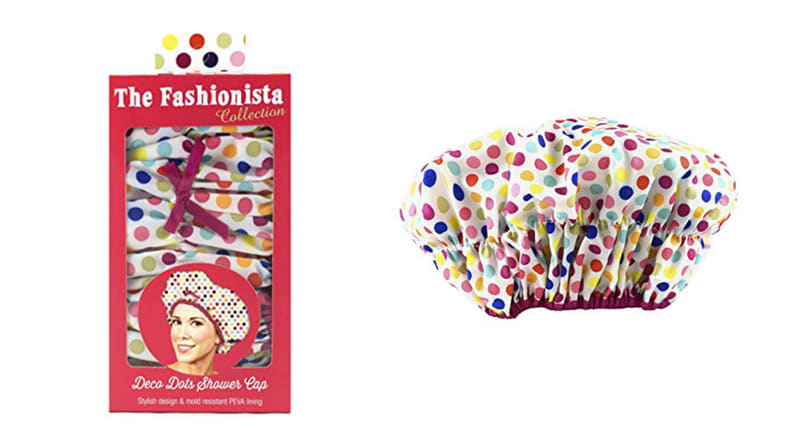
A shower cap keeps water and humidity away from your hair during a shower.
To reduce the temptation to lather up your hair every time you shower, get a shower cap like the Betty Dain Fashionista Collection Mold Resistant Lined Shower Cap, which has 4.3 stars from over 2,400 reviewers on Amazon. Reviewers comment that it helps to keep out the shower’s humidity, which can wreak havoc on a blowout you’re hoping to preserve.
Get the Betty Dain Fashionista Collection Mold Resistant Lined Shower Cap on Amazon for $6.95

